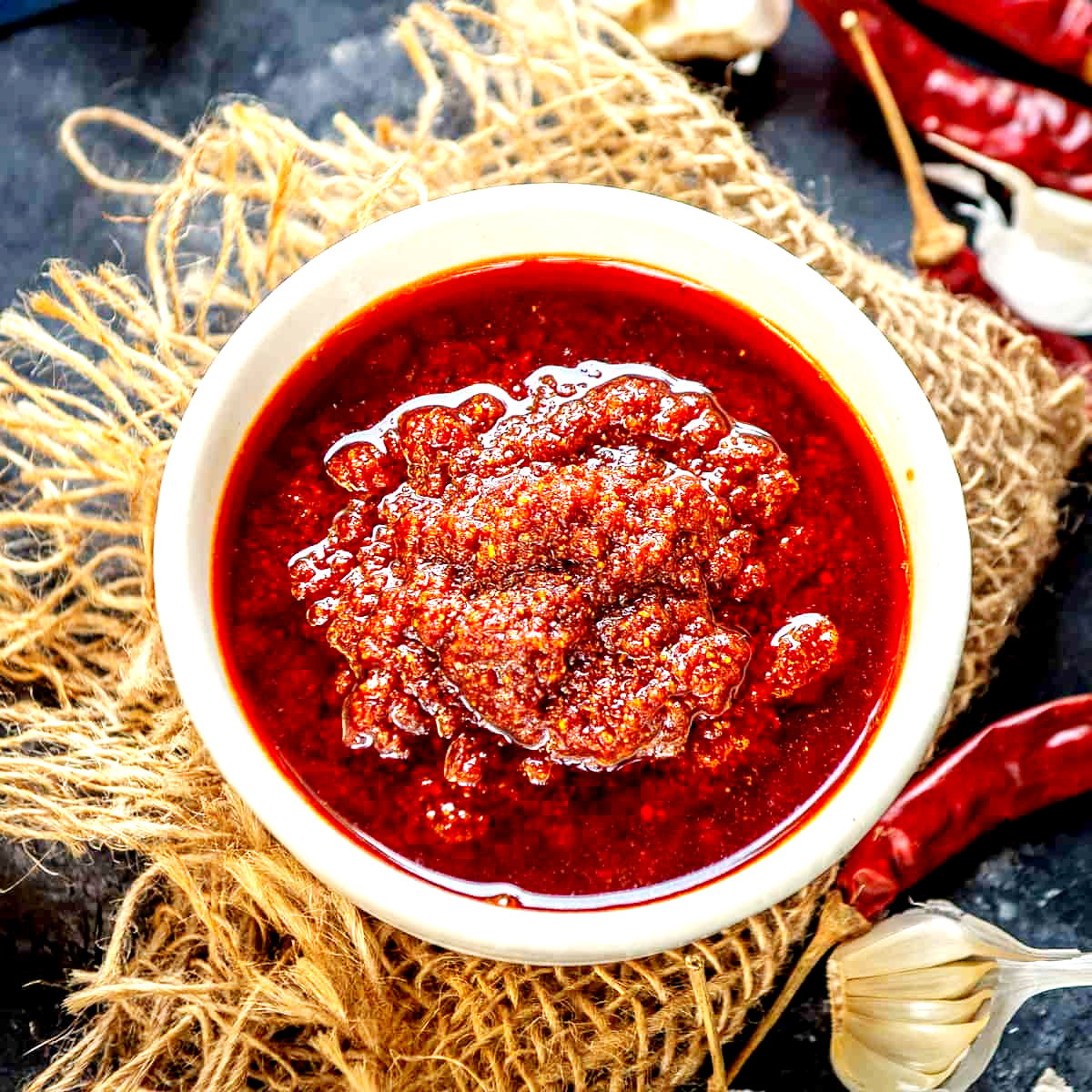
In the sun-drenched lands of Rajasthan, where spices dance on the palate and flavors ignite the senses, there exists a culinary gem that embodies the essence of the desert state – Lehsun ki Chutney. This fiery condiment, crafted from the pungent goodness of garlic and a blend of aromatic spices, has long been a staple of Rajasthani cuisine, adding depth and zest to a myriad of dishes while serving as a testament to the rich culinary heritage of the region.
Origins and Evolution
The history of Lehsun ki Chutney can be traced back centuries, to a time when Rajasthan was ruled by mighty kings and fierce warriors. Garlic, with its potent flavor and medicinal properties, was revered not only for its culinary value but also for its perceived health benefits. It was believed to ward off evil spirits and boost vitality, making it an essential ingredient in the diet of warriors and nobles alike.
Over the years, as Rajasthan’s culinary landscape evolved and diversified, so too did the recipes for Lehsun ki Chutney. What began as a simple blend of garlic, salt, and spices transformed into a complex medley of flavors, with each region and community adding its own unique twist to the traditional recipe. Some versions feature roasted garlic for a milder flavor, while others incorporate tangy ingredients like tamarind or lemon juice to balance the heat.
Culinary Craftsmanship
The art of preparing Lehsun ki Chutney is a labor of love, requiring skill, patience, and a keen understanding of flavor balance. Fresh garlic cloves are peeled and crushed to release their pungent aroma, then combined with spices such as cumin, coriander, red chili powder, and salt to create a flavorful paste. The mixture is then ground to a smooth consistency using a traditional stone mortar and pestle, a technique that not only preserves the integrity of the ingredients but also imparts a unique texture and depth of flavor to the chutney.
Versatility in Cuisine
Lehsun ki Chutney isn’t just a condiment; it’s a culinary powerhouse that adds depth and complexity to a wide range of dishes. From humble dal and rice to decadent kebabs and biryanis, this versatile chutney finds its way into countless recipes, infusing each dish with its signature punch of flavor. It is often served alongside bread, roti, or paratha, providing a spicy accompaniment that elevates the simplest of meals to gourmet status.
Cultural Significance
Beyond its culinary prowess, Lehsun ki Chutney holds a special place in the cultural fabric of Rajasthan. It is a symbol of hospitality and generosity, often offered to guests as a sign of welcome and respect. Its presence on the dining table signifies abundance and prosperity, inviting diners to partake in a sensory journey that celebrates the vibrant flavors and traditions of the desert state.
Preserving Tradition
In an age of fast food and instant meals, the art of preparing Lehsun ki Chutney remains a cherished tradition passed down through generations. While modern conveniences may offer shortcuts, true aficionados understand that the essence of this fiery condiment lies in its authenticity – in the careful selection of ingredients, the meticulous preparation, and the time-honored techniques that have been handed down from one generation to the next.
In the culinary mosaic of Rajasthan, Lehsun ki Chutney shines as a beacon of flavor and tradition, a testament to the ingenuity and creativity of the desert’s inhabitants. Its fiery allure and complex flavors serve as a reminder of the rich cultural heritage that defines the region, inviting food enthusiasts to savor the bold flavors and timeless traditions of Rajasthan’s gastronomic legacy.